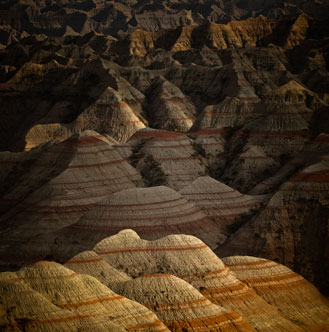
My Evolution as a Photographer
When I was in high school, I thought I wanted to grow up to become a professional photographer. When I was in collage, I took darkroom and studio photography classes, but in the end got distracted and became a graphic designer. In my role as a graphic designer, I mainly worked with other photographer’s images and would occasionally direct a photo shoot. As the years passed, I found myself taking fewer and fewer photographs. Then, once day about fifteen years ago, I quit my job and started to teach Photoshop. When digital cameras started to become popular, I started to shoot once again, but primarily shot “when I had time”, which was either when I was on vacation, or when I needed a specific image for a Photoshop technique I wanted to teach. I eventually moved to into a beautiful house in the mountains of Colorado. It was a log home on the edge of a meadow with only a few homes in the view. I thought I was living an ideal life until I realized there was one area of my life were I wasn’t being fulfilled–my passion for photography. Two and a half years ago, I decided to take some drastic steps in an effort to reconnect with my passion for photography. One day I decided to sell my house and 98% of my material possessions and start to live a mobile lifestyle on a 40′ tour bus. The whole idea was to allow me to feed my passion for photography. This post is about how my approach to photography has changed since making that transition. I hope you come away with some ideas that might have you evolve as a photographer as well.
Here’s a shot of my home on wheels:
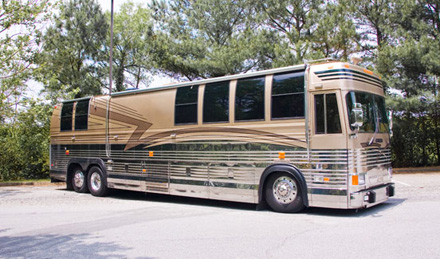
Landscapes
When started living on the open road my first thought was the explore all the national parks and make some classic landscape shots. I spent time exploring the West and discovering some beautiful places. I found I kept referring to a few resources for advice on shooting locations over and over again. My two favorite resources were the Photograph America newsletter (www.photographamerica.com) and a series of three books titled Photographing the Southwest by Laurent Martres.
At this point in my evolution as a photographer, I found that every place that I was visiting had been shot so many times before by so many people that I found my shots were not living up to my expectations. Someone else had visited the same location at a better time of year at a time of day that had better light while capturing a great composition. That’s when I turned to Photoshop in an attempt to make up for what were often less than ideal shooting conditions. I also started to learn a lot more about composition and how big of a difference cropping make. Here are some before and after images that show the type of digital transformation I was making:
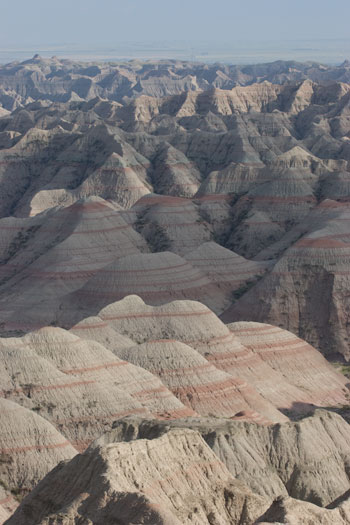
Before
After
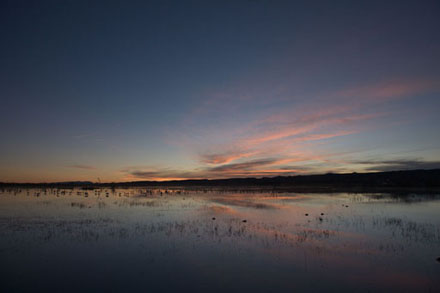
Before

After
I forced myself to take notes after every shooting session to make sure I was learning each time I was behind the camera. For instance, when I shot birds in flight, I noted the shutter speeds that produced sharp images and which ones produced an artistic motion blur. I’d stay at the same location shooting day after day until I started to capture very usable images by evolving my technique based on those shooting notes. I’d use headings for the type of subject matter I was shooting and would be sure to write down a list of what worked and what didn’t. Here are a few examples of what I was able to capture after spending two days experimenting with shutter speeds while shooting birds in flight:
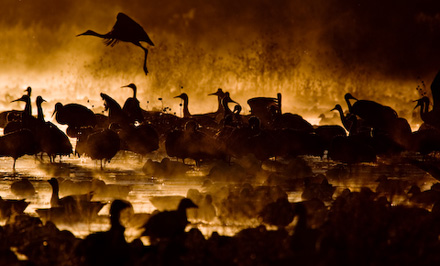
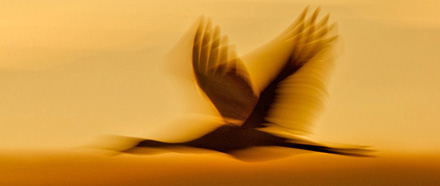
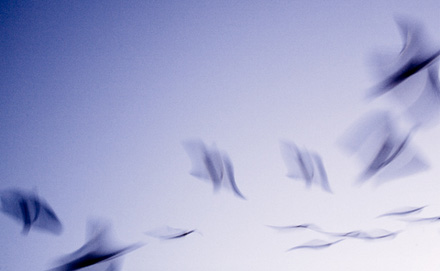
Cadillac Ranch
After spending quite some time crisscrossing America, I found myself returning to some of the same shooting locations over and over. I wasn’t revisiting them on purpose. I just had the need to drive by these locations on my way to get somewhere else and happened to drop by on my way to my true shooting destination. One of those spots was the Cadillac Ranch in Amarillo Texas. After visiting this location at three different times of year, I learned the value of revisiting a familiar subject matter to see both how it has changed over time and how my interpretation of the subject has changed over time. Before this time I might have though “been there, done that, what can I shoot that I haven’t shot before”. Here are a examples of how I’ve captured completely different looks on different visits to the Cadillac Ranch:
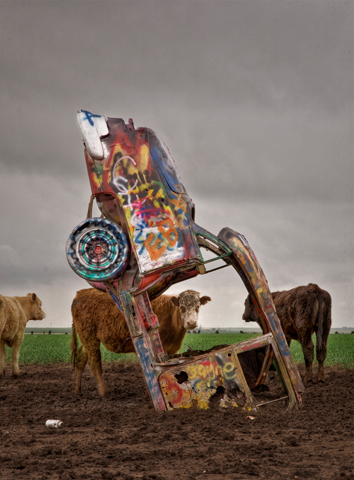
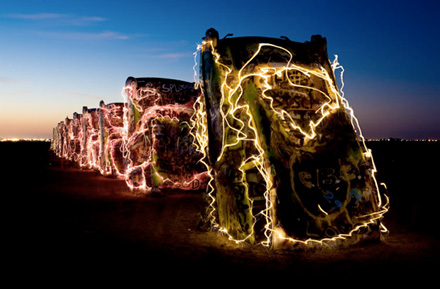

Route 66
One day in May of 2007 and unplanned stop really changed my photographic direction. I started the day shooting Cadillac Ranch in Amarillo, TX and spent the majority of the day driving across the full width of New Mexico before ending in Sedona, Arizona (that’s 636.2 miles!). On a road trip of that length you have to invariably make a pit stop for lunch and on this faithful day, I happened to pull over in a small town that was on Route 66. That’s where I discovered a bunch of old run down gas stations and various buildings in different states of disrepair. I spent around two hours taking photographs before continuing my drive to Sedona, AZ. I didn’t process the images from that day right away, but when I did, I discovered I had captured such a large number of unique and interesting images that one day I’d have to return to Route 66 to explore more of it’s length. Months later I decided to stop exploring National Parks and devote my time to exploring the full length of Route 66. It took me a few months, but eventually I made it all way from Los Angeles to Chicago on the old road. This is really the first time when I started to really feel comfortable and happy with my photography. I was shooting subject matter that I wasn’t used to seeing every day (unlike the National Parks) and I started to experiment with unique shooting techniques like High Dynamic Range (HDR) in the process.
While exploring Route 66 I learned how rewarding it can be to develop a “big project” that you really devote a lot of time to. Since following Route 66, I’ve come up with many ideas for other big projects I’d like to explore in the future. These include shooting unusual subjects like junkyard offices and blacksmith shops. I really look forward to spending years building up a body of work that has a common theme or subject matter. If it wasn’t for that one day on Route 66 I probably would have continued to shoot National Parks and might not have learned the value of creating “big projects”. Here’s one of the images I captured on my first day exploring Route 66:
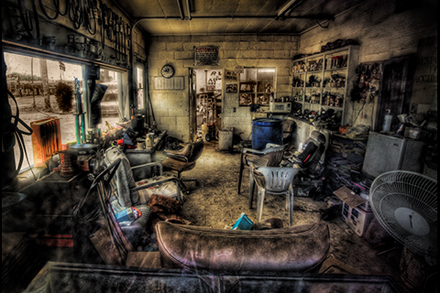
Searching for Unique Subject Matter
At this point in my photographic evolution, I realized that shooting the National Parks wasn’t a high priority for me anymore. My focus had shifted to searching out unique and different subject matter that would allow me to express my own voice through my photography. That’s when I started to search out old ghost towns, junk yards and odd places like the Salton Sea in California. I found these subject matters to really allow my creativity to flow since I hadn’t seen thousands of photographs of them before (unlike the National Parks). So even though I thought my my initial dream was to shoot all the National Parks and shooting classic landscapes, I found “old junk” to be more suited to my stye as a photographer. Here’s one of the images I captured at the Salton Sea:
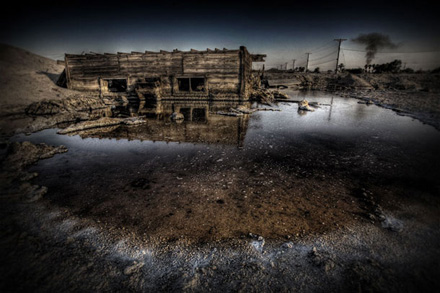
Revisiting Old Work
In the process of following all 2000+ miles of Route 66, I captured 251.75 gigabytes of images. What’s a guy to do with so many images? Sell prints… Do a gallery show… maybe a fine art photography book? That’s when I decided to jump in head first and do all of those things. Doing a book meant having to process and refine hundreds of images. As I processed more and more images, I found that my techniques were improving and I was about to get more and more out of the images. That’s when I found myself wanting to go back to reprocess the images I had worked on earlier and I was amazed at the difference I was able to make. You don’t have to actually print thousands of books since you can have a one-off book printed at web sites like Lulu.com and Mpix.com. Here’s an example of an early crude result and what I was able to come up with after going back and re-working the same image:
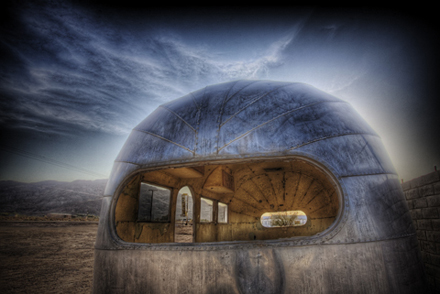

Progressing to Final Art
In the process of refining my images, I started to make 13×19″ prints and hang them in my “gallery” (it’s really the toilet room in my bus, but I can fit about 15 prints in there complete with “lounge chair”). At the time I was thinking of the images as being finished, but I found that leaving the prints hanging in an area that I used every day caused my brain to get very familiar with the images and I was able to come up with more ideas on how they could be further refined. I now make this a standard practice with any images that I plan to print large.
Unifying a Body of Work
While working on one of the Route 66 images, I found I was frustrated that my eye was being drawn to the color in a simple blue sky which is pulling my attention away from the subject of the photograph. On a whim, I decided to try applying a tinted black and white effect to the sky and it ended up being the perfect solution since my eye was no longer being pulled to the sky. As I worked more and more Route 66 images I was feeling that there needed to be more of a theme that unified the body of work to make the images feel like they visually belonged together. That’s when I chose to make all the skies in the images tinted black and white which really started to make the images look like a unified series. By varying the color and saturation used in the sky I could control how much my eye had a tendency to by drawn to the sky in each image. How you done anything to help unify a series of your photographs?
Here’s a before and after so you can see how the tinted black and white changed an image:
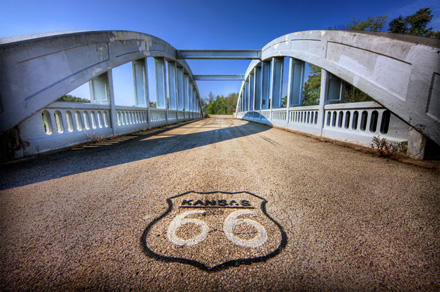

Here’s a few more images so you can get a since for how this is a common theme in my Route 66 body of work:
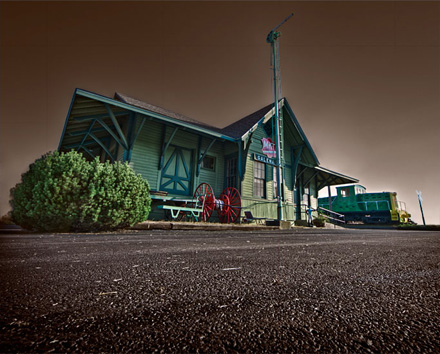
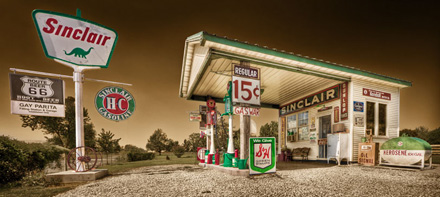
Directing the Viewer’s Eye Through A Photograph
After figuring out that I could keep my eye from being drawn to an overly colorful sky (or force my eye to look at a sky by making it more colorful than other things in the image), I started to experiment with different ways to control where your eye goes in a photograph. I found that your eye is drawn to colorful, bright and detailed areas. So, if I didn’t want your eye to look somewhere, then I might want to darken the area, make it less colorful, or blur the area. When I wanted to eye to look at a particular area first, then I’d make sure it was the most colorful object in the scene.
When I pick up my camera and decide to take a photograph, it’s because I has emotionally drawn into the scene by something. But when I show the same photograph to someone else and ask them what they think, they often bring up things I didn’t think were the best parts of the photo. It was at that point that I decided to try to manipulate my images to try to get the whoever views the image to be drawn to what attracted me to the scene and prevent them from exploring areas that didn’t help the image. By using selective sharpening, selective color and darkening the edges of my images I found that suddenly people started to respond to my images more in alignment with how I would personally interpret the scene.
My Teaching Evolves with My Photography
After spending many years trying to teach the logic of Photoshop, I have now found that my photographic adventures are making a large influence in how I teach. Instead of using 90% stock photography in my Photoshop books, I now use 98% of my own images. I’m currently working on revising all my seminars to incorporate much of the knowledge that I’ve learned over the last two and a half years. I’ve already seen a lot of change happening in the images being produced by the people I teach.
When I first made the decision to sell my house and live a mobile lifestyle, I was sure that I’d want to be spending most of my time exploring National Parks trying to produce images as good as the ones I had seen in books. Over the last two and a half years I’ve found my journey progress and feel I’m starting to find my true voice in my photography by exploring things that I could have never envisioned before I made the transition to a mobile lifestyle. I hope the story of my evolution has given you some ideas on how to evolve as a photographer.
You can follow my adventures at whereisben.com, see larger examples of my photography at thebestofben.com and find out about my seminars at digitalmastery.com
-Ben Willmore



